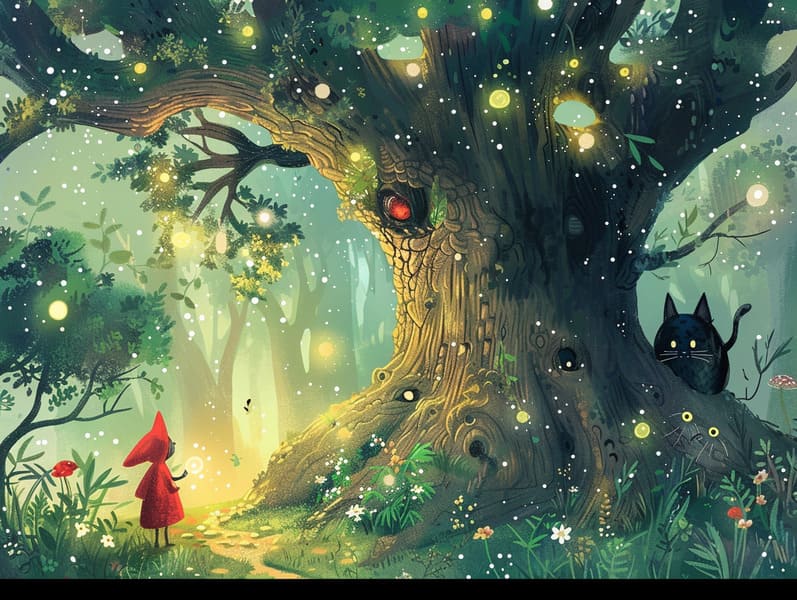The Origins of Mythical Fairy Tales with Their Unending Radiance.
The Origins of Mythical Fairy Tales with Their Unending Radiance.
Blog Article

Popular fairy tales have ancient roots. These stories have been spoken from one generation to the next well before they were ever transcribed. They came from a variety of traditions, including Western traditions. They were initially passed along among elders, often carrying themes and messages pertaining to the societal norms and beliefs of the time.
The Brothers Grimm, Jacob and Wilhelm (the Grimm brothers), were among the first to compile and release many of these beloved stories. Their collection, "Grimm's Children's Stories," included narratives like "The Little Glass Slipper," "The Story of Hansel and Gretel," and "Schneewittchen," which have since become staples in the world of traditional fairy tales. Similarly, H. C. Andersen's enchanting tales, such as "The Mermaid," and "The Little Duckling," have touched hearts worldwide, guaranteeing their place in the pantheon of treasured fairy tales.
Despite their ancient origins, these tales remain as important as ever, especially as children's bedtime stories. These delightful tales are now available in various formats, including vibrantly illustrated books, fantastical animations, and online storybooks.
Their persistent charm can be ascribed to several whimsical characteristics:
Key Lessons: Old fairy tales often teach important moral lessons. Narratives like "The Boy Who Cried Wolf" teach the significance of honesty, while "The Story of the Tortoise and the Hare" point out the benefits of determination and unpretentiousness. These stories offer little ones clear distinctions between virtue and vice, developing their moral compass in a tender yet important way.
Empathy and Understanding: Traditional fairy tales frequently present personalities facing challenges and problems, motivating readers to sympathize with their struggles and encourage their triumphs. For instance, "The Tale of Beauty and the Beast" highlights the benefit of looking deeper to acknowledge the real character of a individual, cultivating empathy and perception.
Cultural Perception: Many ancient fairy tales are rich in the cultural contexts from which they bloomed. Engaging with these stories can provide intriguing perspectives into different backgrounds, advancing a sense of global understanding and awareness.
Imagination and Creativity: The fantasy-filled elements in classic fairy tales—wizardry and magic—enliven children’s fantasies. These tales move readers to otherworldly realms, fostering inventive ideas and a sense of excitement that remains a lifetime.
Classic fairy tales are not only captivating but also educational. They work as fascinating tools in advancing various cognitive and affective skills in young readers. When timeless fairy tales are read aloud, they enhance verbal development by presenting new terms and elaborate sentence structures. This practice also boosts auditory perception and concentration, as the young focus on every detail, check here looking forward to see what happens next.
Furthermore, exploring the themes and characters of old fairy tales can advance thinking skills and thought processes. Kids are guided to detect patterns, anticipate outcomes, and figure out cause and effect. These explorations also facilitate little ones communicate their thoughts and feelings, strengthening their emotional intelligence.
In today’s high-tech era, the abundance of web-based fairy tales has made these narratives more available than ever. Digital sites and web apps feature extensive collections of bedtime fairy tales that can be browsed or heard anytime, anywhere. Fairy tales spoken are particularly well-received, presenting an enjoyable way for the young to enjoy these delightful tales. Sound books and read-out-loud videos guide characters and settings to life, often supported by mesmerizing background sounds and instrumentals that elevate the narrative experience.
The timeless appeal of classic fairy tales lies in their ability to adjust to contemporary times while preserving their central messages. Contemporary retellings of these tales often bring in more multicultural protagonists and modern settings, making them relevant to today’s audience. However, the main ideas of courage, kindheartedness, and fair-mindedness remain unchanged, continuing to affect young listeners of all ages.
Ancient fairy tales also offer a sense of assurance and recognition. They provide a well-structured narrative with a definite beginning, middle, and end, often winding up with the resolution of conflicts and the triumph of virtue over vice. This predictability can be reassuring for kids, bringing a sense of invariability in an variable world.
Timeless fairy tales continue to delight and coach new generations, maintaining their charm and meaningfulness in modern society. As children's bedtime stories, they bequeath a perfect blend of allure and teaching, enriching moral values, empathy, and creativity. The abundance of online fairy tales and the widespread nature of fairy tales read aloud affirm that these timeless tales remain available to new generations.
By keeping and narrating these fairy tales, we continue to appreciate the rich tapestry of mythology and cultural heritage. Whether you are viewing a beautifully illustrated book, accessing a internet collection, or listening via an audiobook, the radiance of classic fairy tales is always within reach. These stories reveal of the undying impact of fairy tales and its ability to bring us together across centuries and lands.
Whether you are experiencing a gorgeously illustrated book, accessing a online library, or listening to an audiobook, the splendor of bedtime fairy tales is always within reach.
These narratives demonstrate of the unchanging essence of tales and its ability to tie us across time and space, forging a link that charms and informs alike.